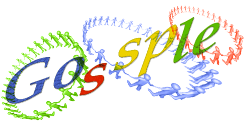Is the network coding gains in wireless network literature realistic?
Objective: Analyzing the network coding performance in a realistic wireless network scenarios
Advisors:
Dr. Aline Carneiro Viana, ASAP, INRIA, France
Prof. Adam Wolisz, TKN/TU-Berlin, Germany
Konstantin Miler, TKN/TU-Berlin, Germany
Context
The notion of Network Coding is presented as a promising generalization of routing where a node is allowed to generate output messages by encoding (i.e., computing certain functions of) its received messages. As a result, network coding allows information to be mixed, in contrast to the traditional routing approach where each node simply forwards received messages. Additionally, it is well known that network coding allows a multicast to reach the max-flow min-cut capacity in a lossless wireline network.
Nowadays, there has been a recent interest in employing network coding in multi hop wireless networks since it allows to exploit natural advantages offered by shared wireless medium. Indeed, since wireless links cause packets to be spread about in a probabilistic manner, there is no reason to restrict information to a path such as wireline networks. Rather, each node that is potentially a relay can encode the packets it receives and sends them out. In such an approach, the concept of routing can be broken and the challenge lies on how to mix the incoming packets.
Goals
Theoretical and empirical studies suggest that significant gains can be obtained by using network coding in multi-hop wireless networks. Although being interesting, such studies are based on simple assumptions concerning the wireless model (such as no collision or no interfering links) and therefore, provide upper-bounded results for the optimal throughput. In order to evaluate the real network coding performance, we propose to use advantages of the well-known OMNET simulator.
Thus, the first goal here is to implement basic network coding functionalities in OMNet. This represents the first step in the performance evaluation of network coding in wireless networks, when a realistic interference model is considered. The second goal is the validation and critical analysis of the implemented model in different network scenario and type of code. A comparison with already performed mathematical studies will be also required.
Tasks
- Implement a technique called Random Linear Network Coding in the network simulator OMNET.
- Validate the implemented technique using simple simulation scenarios and wireless interference models present in OMNet
- Analyze the implemented network coding technique using the following metrics: delay, number of transmission and/or throughput.
- Using MatLab, implement and compare a realistic wireless model and network coding functionalities to our already performed mathematical studies
Required Knowledge and Background
According to her/his background, the internship is expected to work either along a theoretical line, or a more applied line. Moreover, a strong background on wireless communication, C++, protocol design, and practical experimentation is requires. Candidates should be able to perform good critical analysis of obtained results and be creative in proposing solutions. International journals and conferences publications, as well as, technical reports are also expected.
Keywords
Network coding, wireless model, additive inference model, throughput, delay, energy consumption

